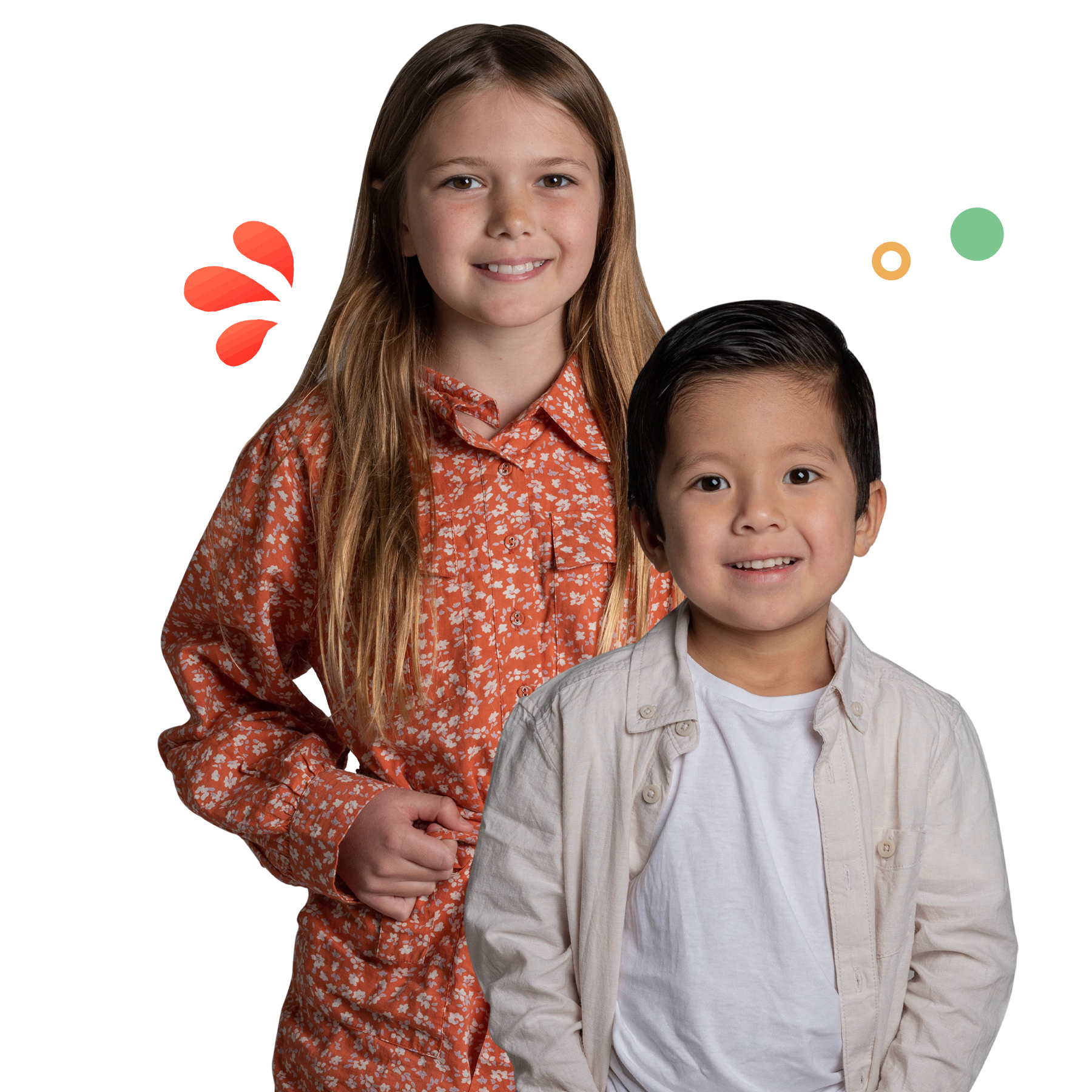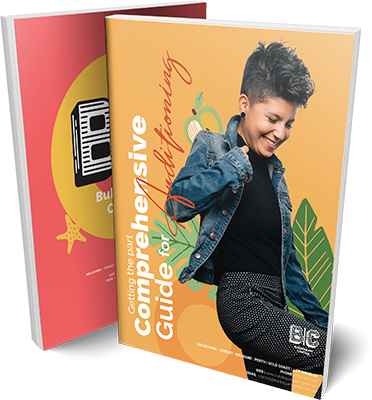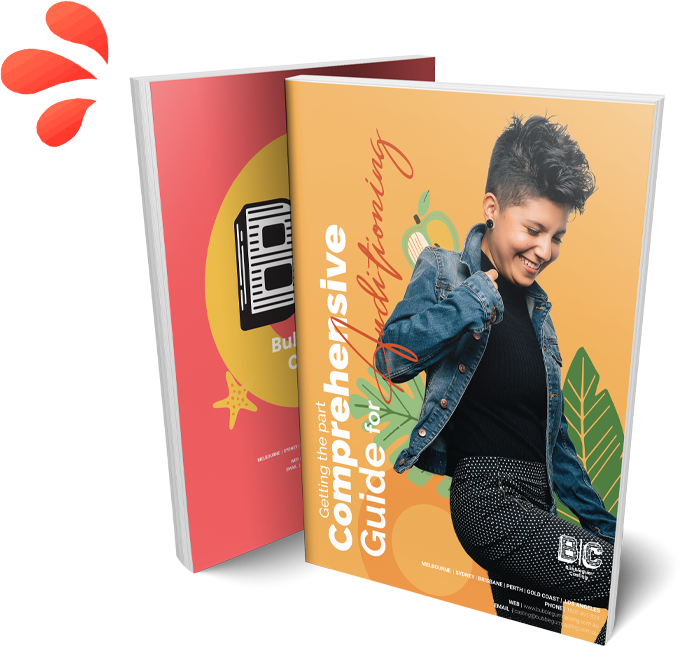Diving into the modelling world can be like stepping onto a thrilling rollercoaster, especially if you’re just buckling up for the ride. It’s a dazzling mix of excitement and mystery, partly because the insiders seem to speak their own secret language.
Ever heard of “comp cards” or “deportment”? Yep, it’s like they have their own dictionary. But don’t worry, we’re here to be your guide through this fabulous maze of terms. Get ready to crack the code of modelling lingo and join the fashion fun!
modelling Terms Quick links
modelling glossary
To make your voyage through the fashion universe a breeze, we’ve whipped up a handy guide to help you decipher the cryptic lingo of the modelling world. Think of it as your secret decoder ring, transforming you from a novice to a knowledgeable insider in no time.
This isn’t just any glossary; it’s your ticket to blending in with the fashion elite. And because the world of modelling never stands still, we’ll be updating our guide with the freshest jargon out there. Stay tuned as we keep you in the loop with all the latest buzzwords and trends, ensuring you’re always runway-ready!
Agency
An agency, or more specifically, a modelling agency, acts as a crucial intermediary for models aiming to carve a niche in the fashion and entertainment sectors. Such agencies take the reins in orchestrating a model’s professional engagements, from orchestrating photoshoots and runway shows to other lucrative assignments.
Additionally, they play a pivotal role in contract negotiations and fee discussions. Premier modelling agencies extend beyond these fundamental services, offering resources and support exemplified by the guides available at Bubblegum Casting. Operating on a commission model, agencies typically claim a 10-20% cut of a model’s earnings per assignment.
Booker
Within the confines of a modelling agency, a booker—or alternatively, a model booker or agent—serves as the linchpin in arranging and managing the agency’s models’ engagements. This individual is instrumental in bridging the gap between models and clients, ensuring seamless communication.
Beyond logistical coordination, a booker’s responsibilities encompass negotiating rates and contracts with clients while safeguarding the model’s rights as an employee. Effective bookers are distinguished by their exceptional communication and organizational prowess.
Campaign
A campaign, in the context of modelling, refers to a cohesive sequence of advertisements showcasing a particular model or ensemble of models, adhering to a unified theme.
These campaigns are the creative offspring of fashion designers, marketers, and creative directors, aimed at promoting new product lines or services. They span various mediums, including print, television, billboards, social media, and online platforms. Occasionally, campaigns may concentrate on a singular medium for maximum impact.
Catwalk
The catwalk, or runway, is the elevated platform seen at fashion shows, where models parade to exhibit the latest fashion designs. Characteristically long and narrow, catwalks lack side railings to afford the audience an unobstructed view of the models’ attire and silhouette.
While primarily associated with fashion events, catwalks also feature in beauty pageants and exhibitions, serving as a stage to showcase attire, accessories, and physical poise.
Commercial Model
A commercial model specializes in representing advertising and marketing campaigns for a diverse array of products and services. Unlike their counterparts who frequently grace the fashion runways, commercial models are more commonly seen in print ads, television commercials, billboards, and online promotions.
Often photographed in studio settings, these models vary widely in shape and size, reflecting the industry’s shift towards relatable representations. Due to the broad spectrum of advertising needs, commercial models typically enjoy a wider range of opportunities compared to fashion models, aligning with market demands for relatable imagery.
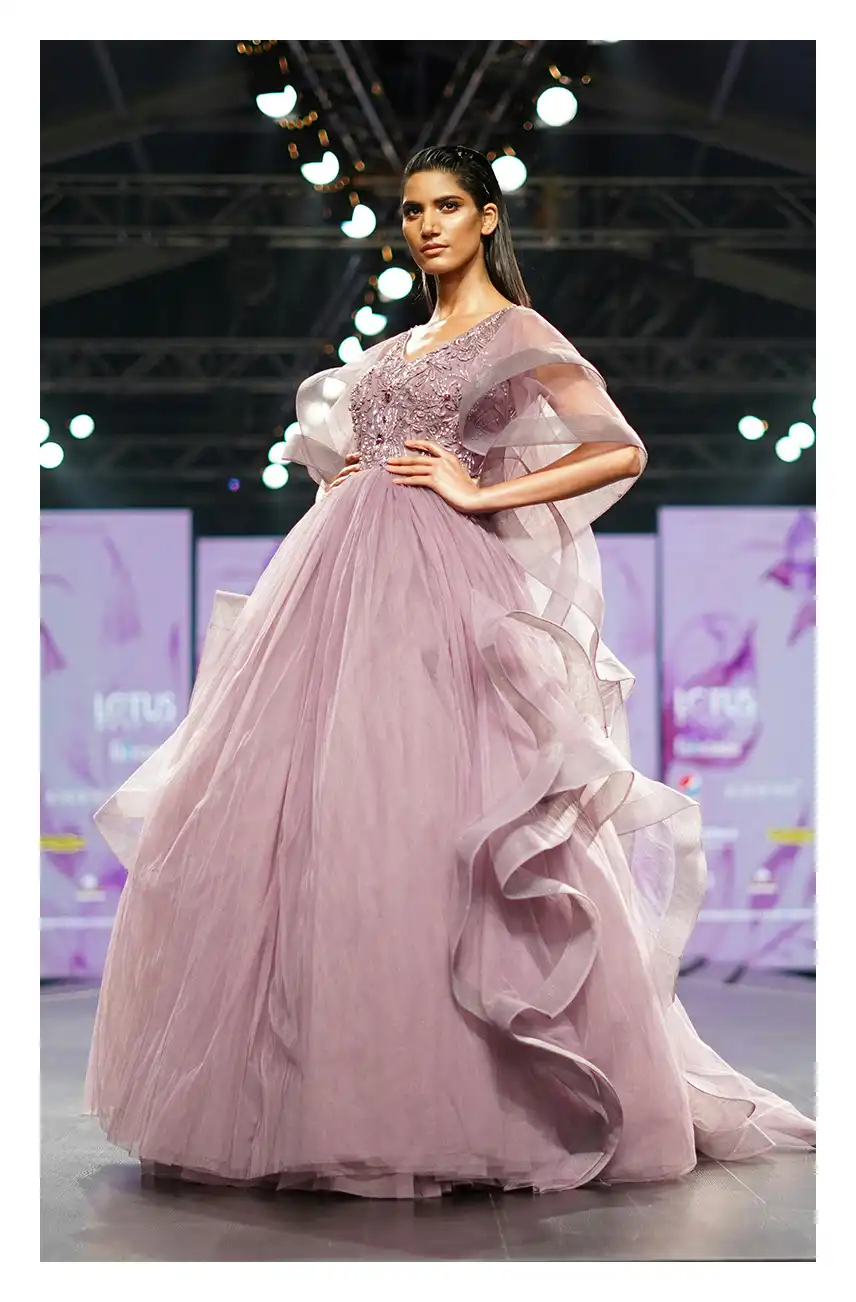
Comp Card
A comp card, short for composite card, serves as a crucial marketing asset for both models and agencies, designed to showcase a model’s portfolio to prospective clients. Typically, a comp card includes a handpicked selection of a model’s finest photographs along with essential details. On the front, you might find one or two prominent photos, while the reverse side features personal data such as measurements, agency contact information, skills, and occasionally, an eye-catching tagline. Comp cards are frequently distributed at industry gatherings or presented during casting calls, functioning as a portable portfolio that highlights a model’s versatility and appeal.
Deportment
Deportment in the modelling context pertains to a model’s stance, demeanor, and conduct, particularly noticeable on the runway or during photo sessions. It encompasses a wide array of attributes and behaviors, from the elegance of movement to the precision of posture.
Mastery in deportment is crucial for a model’s training, significantly influencing the ambiance and effectiveness of fashion shows or photoshoots. Recognizing its importance, many newcomers to the modelling world enroll in deportment courses to refine their grace, posture, and overall presentation skills.
Editorial Modelling
Editorial modelling is a niche within the modelling industry, characterized by its appearance in the editorial sections of magazines, newspapers, and digital platforms. Distinguished by its association with high fashion, editorial modelling is often viewed as more prestigious than commercial modelling. It typically features avant-garde clothing and accessories from luxury brands and designers, setting a narrative or thematic context for the shoot.
Editorial shoots aim to captivate and mesmerize, often prioritizing artistic expression over relatability. Hence, the most successful editorial models possess distinct looks that set them apart, embodying the concept that they’re not just models but muses for striking visual narratives.
Fashion Week
Fashion Week represents a pivotal sequence of events in the fashion industry, where designers and brands unveil their latest collections to a discerning audience composed of industry insiders, including buyers, media personnel, fellow designers, and celebrities.
While the marquee events in London, New York, Milan, and Paris are globally recognized, Fashion Weeks also occur in other cities worldwide, including Sydney and Melbourne, bringing the haute couture experience closer to home. These events serve as a critical platform for designers to gain exposure and for the fashion industry to spot emerging trends.
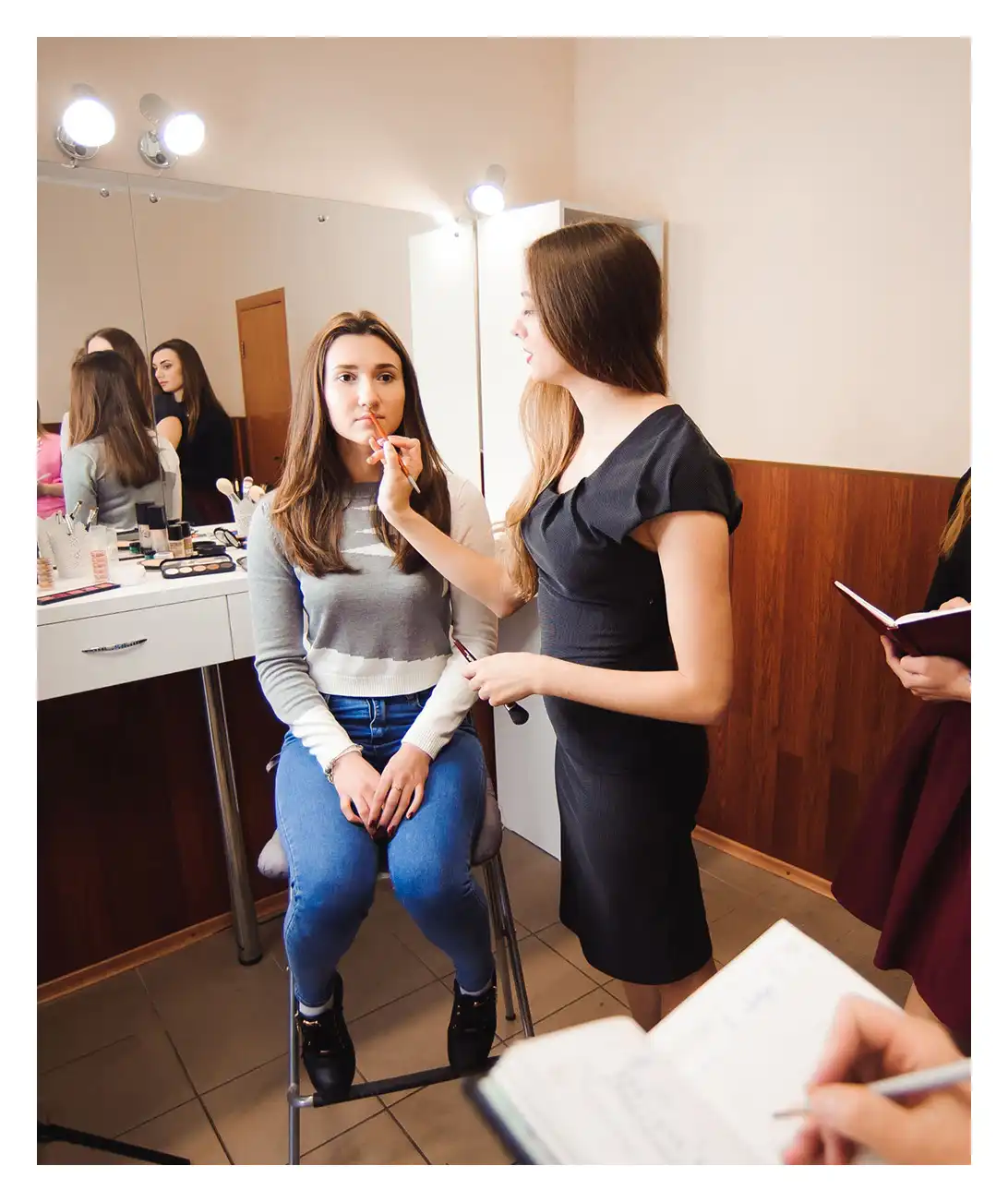
Hair and Makeup
In the modelling world, hair and makeup are foundational elements, entailing the professional styling of a model’s hair and makeup before and during photoshoots or runway shows. This aspect is crucial, as expertly applied makeup can significantly enhance a model’s appearance on camera.
Typically, a dedicated hair and makeup artist is present at shoots to ensure models look their best, relieving models from the responsibility of managing this aspect themselves. The process is always conducted on-site, whether in a studio or at the location of the shoot.
Lookbook
A lookbook is a curated collection of photographs showcasing a fashion designer’s latest creations, designed primarily to give buyers a glimpse into the collection’s style and to encourage bulk purchases by retailers. Professional photographers capture these images either in a studio setting or on location, providing a visual narrative of the designer’s work.
Models, too, may compile their own lookbooks as a detailed and visually rich portfolio to highlight their versatility and appeal across a variety of themes. A model’s lookbook includes comprehensive personal details, serving as an extended portfolio for brand engagements and client outreach.
Sedcard
A Sedcard, also known as a seduction card, mirrors the concept of a comp card. It presents a model’s photographs on one side and essential personal information, including measurements and agency contact details, on the other. Functioning much like a business card, Sedcards are distributed at industry events to catch the interest of potential clients. Predominantly used in mainland Europe, the Sedcard is a vital tool in a model’s arsenal for networking and securing opportunities within the fashion industry.
Fitness Model
A fitness model specializes in representing the fitness industry, collaborating with clients and brands associated with gyms, fitness and activewear brands, health companies, and outdoor brands. These models typically exhibit a toned, athletic, or muscular physique, embodying the epitome of physical fitness and the capability to engage in demanding physical activities during photoshoots.
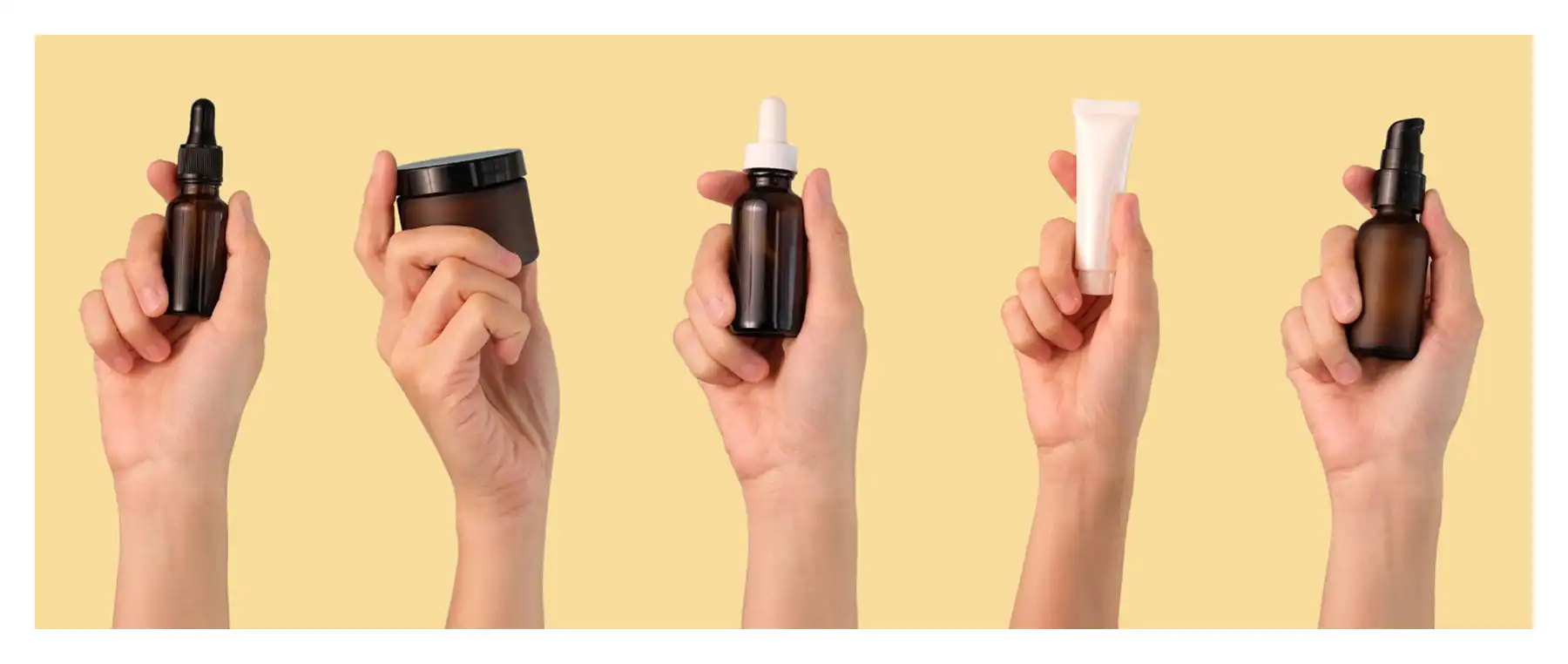
Hand Model
Hand models are uniquely skilled individuals who focus solely on modeling with their hands, showcasing products and services. This niche segment of modelling is often underestimated, with many assuming that general models handle hand modelling tasks. However, hand modelling demands exceptionally well-maintained hands, the ability to remain steady for extended periods, and rigorous hand care. Icons like J.P. Prewitt epitomize the pinnacle of hand modelling excellence.
Headshot
A headshot in modelling is a professional photograph focusing on a model’s face and head, typically featured in their portfolio or on talent directories. These photos are crucial for showcasing a model’s distinctive looks, facial features, and expressions, often serving as the first impression for casting directors, photographers, or clients. It’s vital for models to regularly update their headshots to ensure the images accurately represent their current appearance, maintaining an up-to-date and authentic portfolio.
High Fashion
High fashion embodies the pinnacle of luxury and couture wear, showcasing garments from prestigious and often costly designer labels like Chanel, Dior, Gucci, and Louis Vuitton. This fashion segment is celebrated for its use of premium materials, elaborate designs, and impeccable craftsmanship. Many high fashion pieces are bespoke, gracing the red carpets globally. Models in high fashion are usually distinguished by their runway or catwalk presence, often having a taller and slimmer physique compared to those in commercial modelling, chosen for their distinctive looks akin to editorial modelling.
Male Model
A male model, straightforwardly, is an individual who models and identifies as male. Their professional scope mirrors that of female models, encompassing runway, editorial, commercial, fitness, and swimwear modelling, with opportunities in glamour modelling as well. Male models engage in a similar breadth of work, highlighting the industry’s diversity.
Model Management
Model management represents the core function of a modelling agency, focusing on promoting models to potential clients and aiding in the development of their careers through securing diverse work opportunities, including photo shoots, fashion shows, and advertising campaigns. This aspect is crucial for a model’s success, as independently navigating the complexities of the industry and managing such a multitude of tasks is nearly impossible for models without the support of an agency.
Modelling Scout
A modelling scout plays a vital role within a modelling agency, tasked with discovering and recruiting new talent. Scouts often explore public spaces to identify individuals with potential for industry success. Their responsibility extends to assessing the prospects of potential models and determining their fit with the agency’s needs. Scouts are pivotal in the dynamic modelling industry, where the demand for new faces in campaigns is constant, ensuring a continual influx of fresh talent.
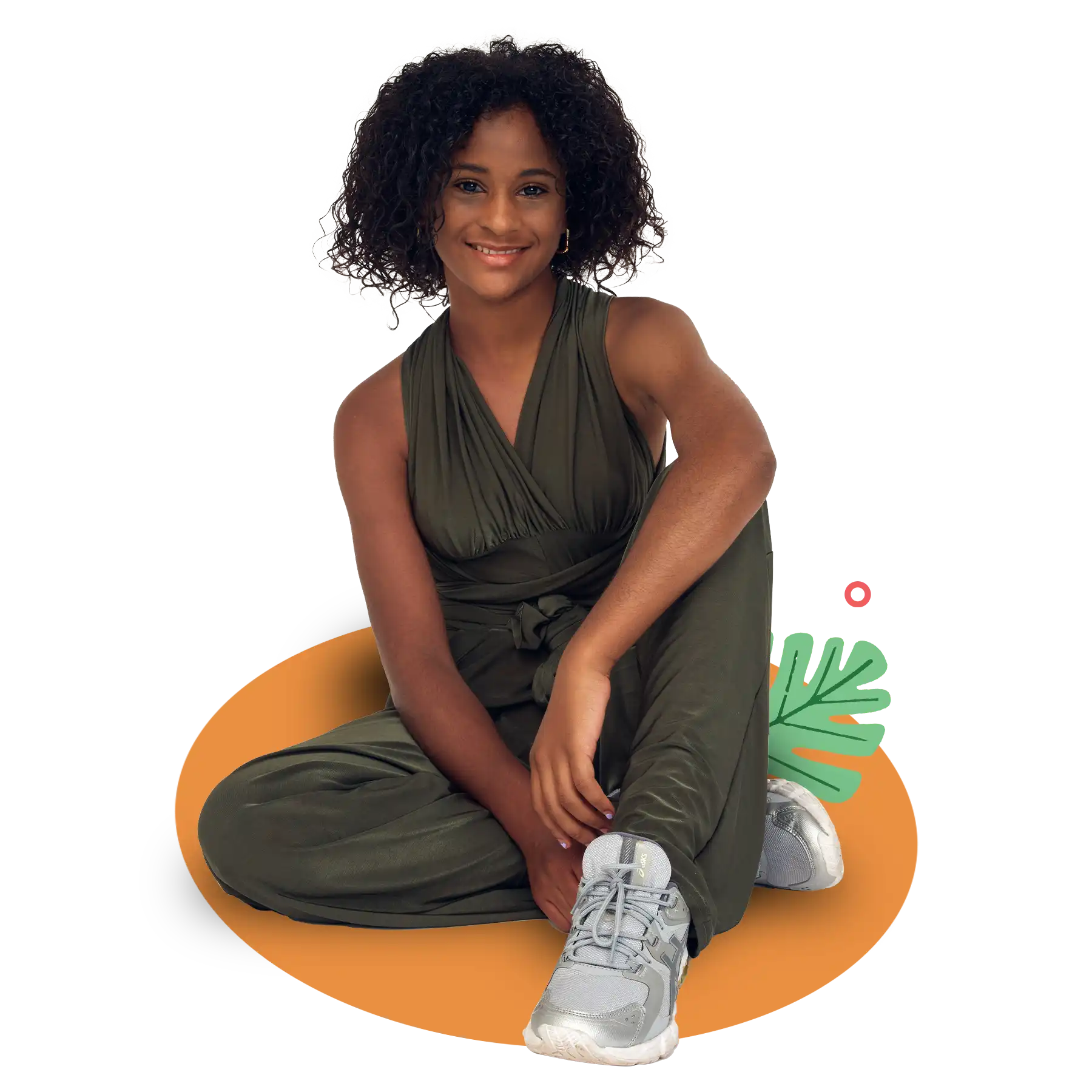
Modelling School
A modelling school offers specialized training programs designed to equip aspiring models with the essential skills and knowledge for a successful career in the modelling industry. These institutions conduct classes and workshops covering various aspects such as runway walking, posing techniques, hair and makeup styling, and photo shoot preparation. Additionally, modelling schools provide valuable guidance on portfolio development and industry navigation. Many maintain strong connections with local modelling agencies and scouts, facilitating opportunities for their students to enter the professional realm.
Photo Shoot
A photo shoot is a professional session conducted by a photographer, capturing a model in a series of poses to fulfill a specific client brief. While studio environments are common, photo shoots can also occur outdoors or at unique locations like bars or hotels. The collaboration between the photographer and the model aims to achieve a particular look or theme as requested by the client. Depending on the project’s scope, a photo shoot might span a few hours or extend over several days.
Plus Size Model
A plus-size model refers to individuals who are size 12 or 14 and above for females, and males with a waist size of 34 inches or more, challenging the conventional industry standards for model sizes. Contrary to some beliefs, being a plus size model does not equate to being overweight but rather represents a body size larger than the traditional modelling criteria. Plus size models engage in similar roles as their counterparts, particularly in commercial modelling. The demand for plus size models is on the rise as brands increasingly aim to reflect the real body diversity of their consumer base.
Portfolio
A portfolio is a curated collection of a model’s best work, showcasing their versatility and skill across various types of modelling. It typically includes a mix of headshots, full-length images, and photos from past assignments, all captured by professional photographers. A well-assembled portfolio is crucial for making a strong impression on potential clients and photographers, representing a significant investment in a model’s career. Hence, engaging a photographer with experience in creating modelling portfolios is considered essential.
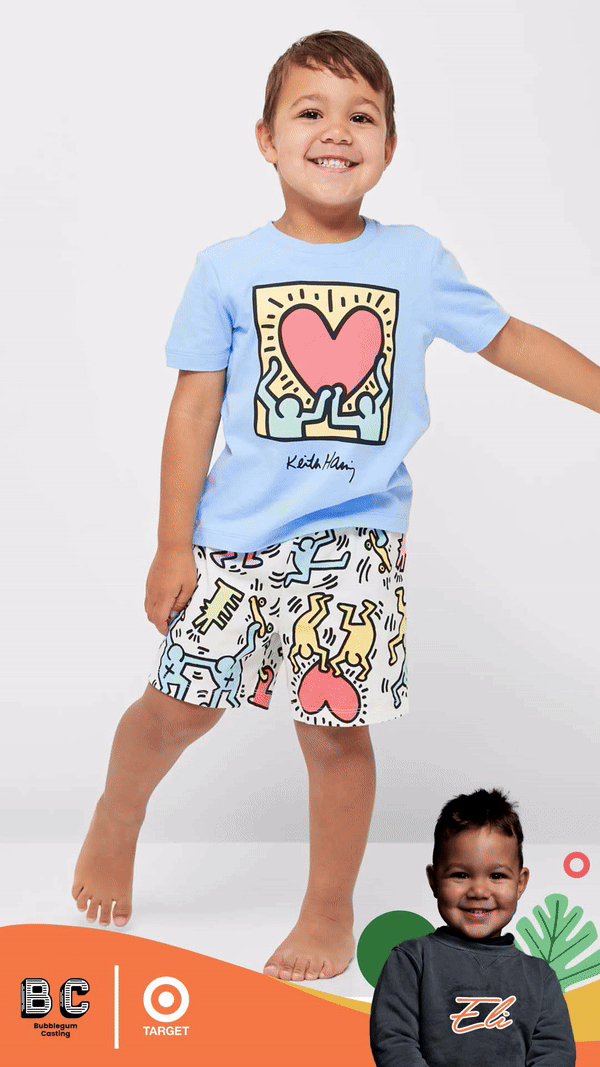
Pose
In modelling, a pose refers to the specific posture or stance adopted by a model during a photoshoot or runway walk, crafted to highlight the attire or products being showcased or to accentuate the model’s physical attributes.
Models often have a repertoire of poses ready for use as needed, with some developing signature poses that set them apart. These poses are integral to the modelling process, helping to convey the desired message or aesthetic of the fashion or product being represented.
Print Model
A print model specializes in appearing within print media, including magazines, newspapers, catalogues, and billboards. This category encompasses a broad spectrum of modelling, from high-end fashion to commercial projects.
Historically, print modelling was the predominant form of modelling work, though its prevalence has shifted with the rise of online campaigns. Print models are integral to the visual aspect of advertising and editorial content, offering versatility across various themes and styles.
Promotional Model
Promotional models are engaged to enhance the image and visibility of a product, service, or brand during events such as trade shows, conventions, and product launches. These models play a crucial role in creating a positive association with the brand, drawing attention, and stimulating interest among the audience.
Essential traits for promotional models include excellent interpersonal skills, as they often interact with potential customers, distribute promotional materials, or demonstrate products. Selection for promotional models is typically based on their aesthetic appeal and relevance to the target demographic.
Runway Model
Runway models are distinguished by their primary focus on participating in fashion events and shows, where they exhibit the latest creations from top designers. While they may engage in commercial or editorial modelling, their core responsibility lies in presenting clothing and accessories on the runway. Characterized by their height and slender build, runway models often possess distinctive features that set them apart in the fashion industry.
Showroom Model
Showroom models collaborate closely with fashion designers and clothing manufacturers to showcase new collections to buyers and retailers within a showroom setting. This direct presentation on live models provides a more tangible understanding of the designs compared to viewing them in photographs. Although showroom modelling operates behind the scenes, away from the public eye, it plays a vital role in the business side of fashion, facilitating large-scale transactions.
Supermodel
Supermodels are the crème de la crème of the fashion modelling world, celebrated for their exceptional beauty and style. They command significant influence and are highly sought after for prestigious fashion shows, editorial work, and various high-profile modelling engagements. Supermodels often transcend the boundaries of modelling, achieving celebrity status and becoming iconic figures within the fashion industry. Examples like Naomi Campbell and Cara Delevingne epitomize the supermodel status, renowned not just for their work, but as influential personalities in fashion.

Talent Agency
A talent agency operates as a representative for a diverse array of talented individuals across various fields, including actors, models, creatives, comedians, influencers, and musicians. Unlike a modelling agency, which exclusively represents models, a talent agency broadens its scope to include a wider range of artistic and creative professions. The agency’s role encompasses finding work for its clients, promoting them within its network of industry contacts, and providing career guidance and resources. Talent agencies play a crucial part in navigating the complexities of the entertainment and creative industries, offering a supportive platform for individuals to advance their careers.
Test Shoot
A test shoot is conducted primarily to evaluate and refine the skills of photographers, the versatility of models, the creativity of makeup artists, or the suitability of specific locations. Often undertaken with minimal or no compensation, these shoots are not intended for commercial use or publication. However, the resulting images are invaluable for portfolio development, skill enhancement, and conceptual experimentation. Test shoots offer aspiring models and other creatives an opportunity to gain experience, explore different styles, and enhance their professional portfolios.
Trade Show Model
Trade show models are professionals hired to represent and promote products or services at trade shows, conventions, exhibitions, and similar events. Their role is to attract visitor attention to their client’s booth, provide product demonstrations, answer queries, and interact with attendees to create a positive and engaging experience. Trade show models are selected for their outgoing personality, communication skills, and in some cases, specific product knowledge or sales training. Their presence can significantly impact the visibility and effectiveness of a company’s exhibition, making them a valuable asset in event marketing strategies.
Child Model
A child model refers to a young individual under 18 years of age engaged in modeling activities. Despite the limitations on their working hours, child models are highly sought after and remain as active in the industry as their adult counterparts. They typically fall into various age categories: newborns/babies, toddlers, children, and teens, playing vital roles in commercial modeling for child-centric products and services, as well as participating in family-oriented campaigns. Occasionally, child models are also featured in runway shows specifically tailored to younger audiences.
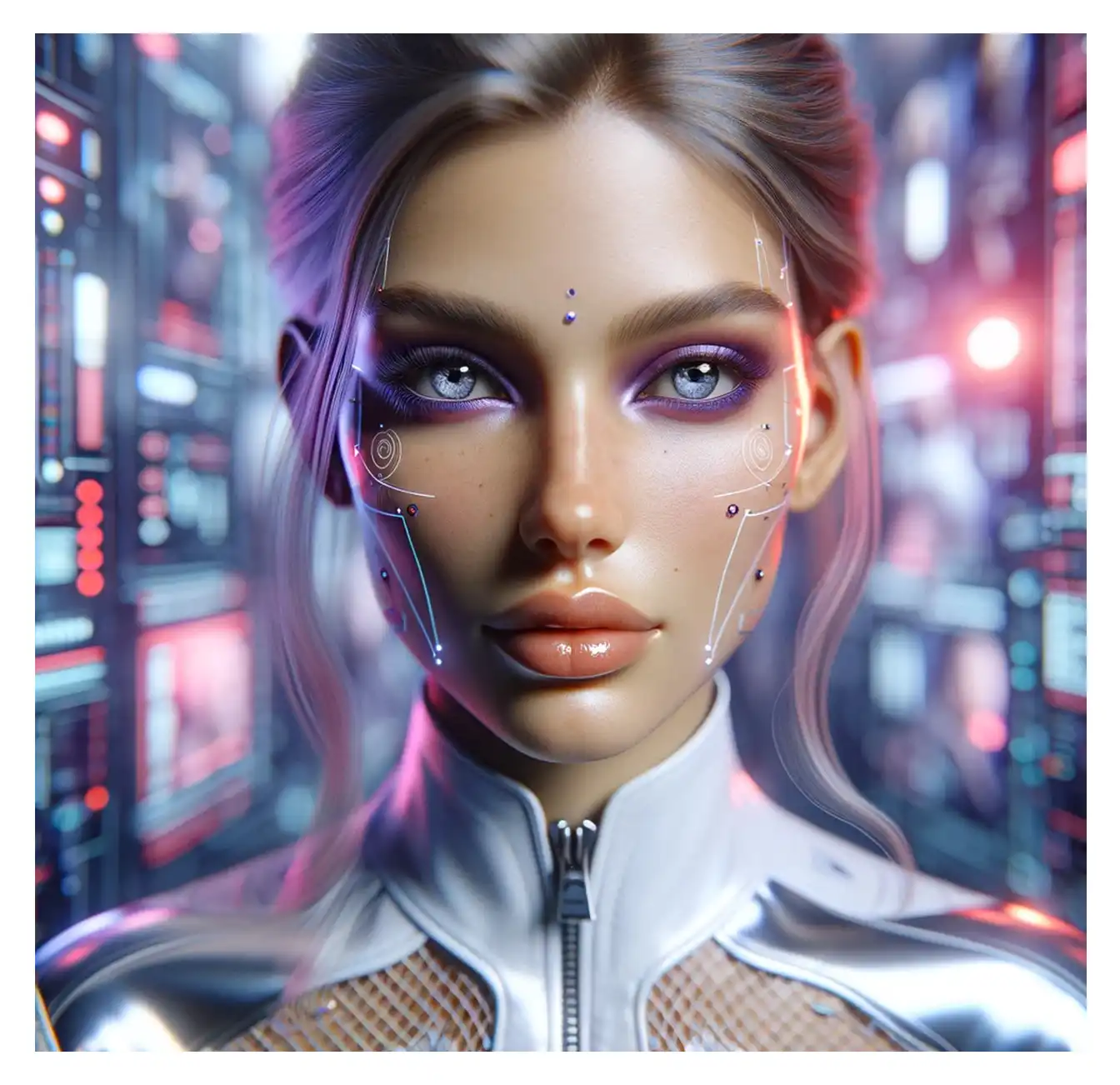
Virtual Model
Virtual models are digitally created avatars, designed with realistic human features through the use of artificial intelligence (AI). This concept, which might sound like a peek into the future, is rapidly gaining traction within the modeling industry. Virtual models are employed in specialized campaigns, offering a novel approach to traditional modeling. A notable example from 2019 is Daisy Paige, a CGI-generated model who was signed by a Los Angeles-based modeling agency, underscoring the growing interest and acceptance of virtual models in fashion and advertising campaigns.
Wardrobe
In modeling, the term “wardrobe” refers to the assortment of clothing and accessories a model wears during photo shoots or events. While the wardrobe is typically provided by the client, there are instances in commercial shoots where models might wear their own outfits. The wardrobe department plays a crucial role, especially in fashion shoots, where multiple outfit changes are common. Beyond fashion, wardrobe selection is also critical in non-fashion commercial shoots, as it significantly influences the shoot’s theme and the audience’s connection with the model.
Weight Requirements
The concept of weight requirements has become less prevalent in the modern modeling industry. This shift reflects a broader trend towards embracing diverse body types, moving away from the traditional emphasis on slim physiques, particularly in commercial modeling. Nowadays, instead of specifying weight criteria, clients are more likely to request models based on particular sizes or heights to suit specific assignments. This change marks a significant move towards inclusivity and representation within the industry, focusing on relatability and diversity in model selection.
Zoolander
In any comprehensive glossary of modeling terms, it’s essential to acknowledge Derek Zoolander, the fictional epitome of male modeling excellence, renowned for his iconic “Blue Steel” look and unforgettable walk at Paris Fashion Week. Zoolander has become a cultural reference point, embodying the exaggerated allure and charisma of the modeling world.
As you delve deeper into the modeling industry, you’ll encounter a wide array of terms, many of which are intimately linked to fashion. The terms discussed previously are among the most pivotal, providing a foundational understanding necessary for anyone embarking on a modeling career.
Whether you’re aspiring to dazzle on the catwalk or make your mark in commercial modeling, your journey is just beginning. We’re eager to support aspiring models in their quest for success. If you’re ready to pursue your modeling dreams, we invite you to reach out. Join our agency today, and let’s set the stage for your journey in the modeling industry.
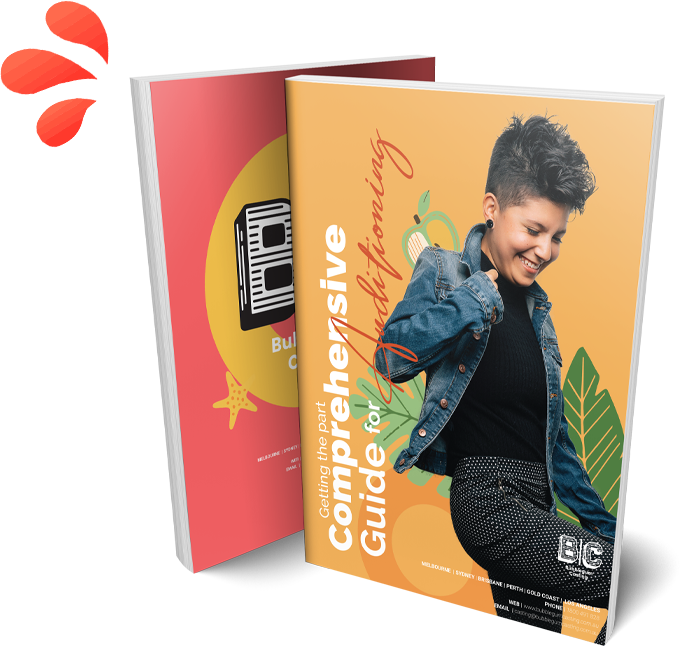
DOWNLOAD OUR
EBOOK ON
COMPREHENSIVE GUIDE FOR AUDITIONING
WANT TO BE A CHILD
ACTOR OR MODEL?
At Bubblegum, we represent some of Australia’s brightest young stars, but even so, we’re always on the lookout for fresh new faces and talent.
If your child is aged anywhere from 3 months to 18 years of age, and you think they might have what it takes to shine in front of a camera or on stage, then we want to hear from you.
We’ll set up a quick informal chat where we’ll get a feel for your child’s suitability for working in the industry.
The lucky kids that make it onto our books benefit from in-house workshops and coaching sessions to help them brush up on their skills. They’ll also get great advice and tips from the Bubblegum team, some of whom have worked as child models and actors themselves! We’ll even arrange a portfolio shoot with our in-house photographer.
We want all the kids on our books to have their chance to shine and if that means working twice as hard to make it happen, then that’s what we’ll do!

